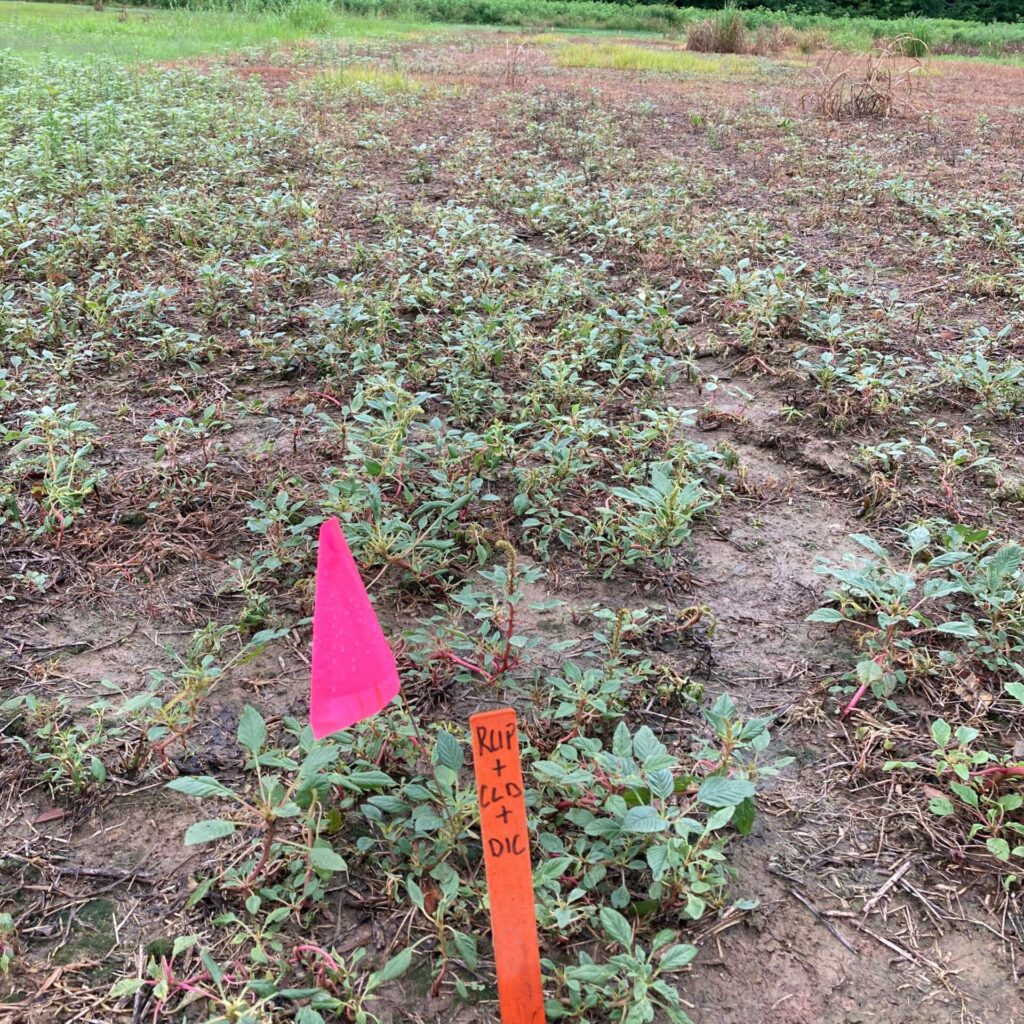
Judging from research tests and walking a few farmers’ fields many of the PRE applied herbicides in soybean and cotton played out about a week or so ago. Timing is everything on trying to do the best job on Palmer amaranth that has broken through the PREs. With respect to Palmer amaranth that has low-level dicamba or 2,4-D resistance (2 to 3x), timing is even more important. Moreover, herbicide selection is also critical in controlling resistant Palmer.
In our research where dicamba or 2,4-D are applied to resistant Palmer amaranth less than 4” tall the weeds grow laterally fairly slowly (0.5”/ day) for 10 to 14 days after application (DAA). By 14 DAA they appear to shake off the dicamba and start growing like Palmer can (>2”/day) (Picture 1). However, if the resistant Palmer is just a little larger at time of application (4 to 8”) they still grow sideways for a few days but the rate of growth looks to be faster (>1”/day) and they recover quicker from the dicamba or 2,4-D (Picture 2).

With all the wet weather this week, Palmer will likely be larger by the time a sprayer can get across the fields. Therefore, if Palmer is not controlled with an application of dicamba or Enlist One expect it to recover within 7 days or so. Follow-up applications will need to occur no later than 7 to 10 days after the initial application for the best chance of success. If possible that follow-up herbicide needs to be glufosinate under good temperature and time of day conditions.
If the crop is not glufosinate tolerant or if you cannot get glufosinate due to supply issues then a re-treat with dicamba or Enlist One on Xtend and Enlist crops respectively, is an option. In fields where Palmer is not tolerant to dicamba or 2,4-D, the follow-up applications should clean up the field. However, based on last years’ field observations, in fields where resistance is present, there will be survivors.

